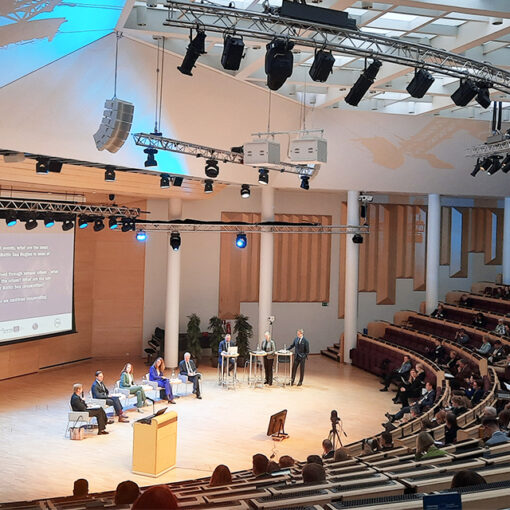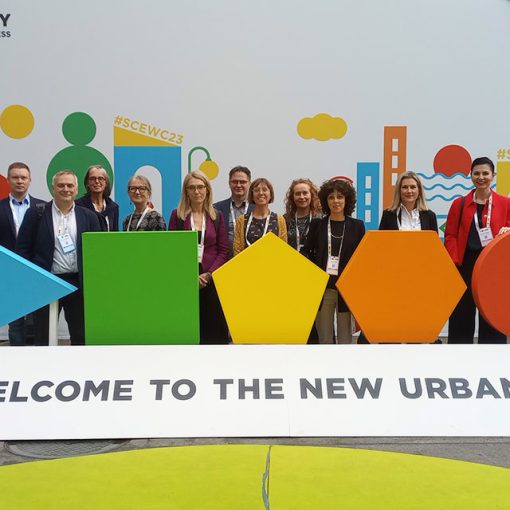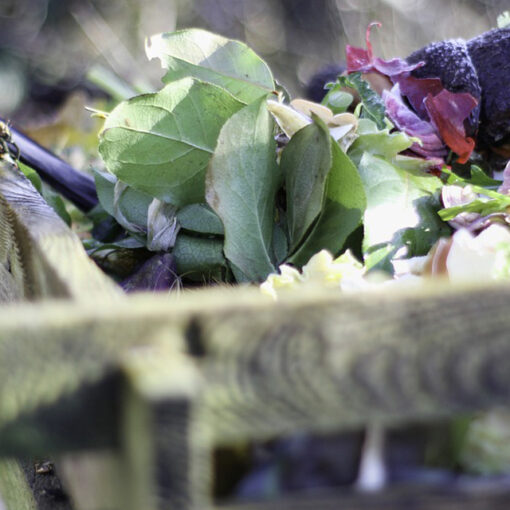Of the different categories for designating features of significance to mankind, the United Nations Educational Scientific and Cultural Organisation (UNESCO) has identified UNESCO Global Geoparks, as areas of international geological significance – relating to them education and sustainable development are central features. The tourism associated with geoparks should be sustainable regarding the area being visited, and since it necessarily involves a fair number of off-road visits on foot or by bicycle, it is both environmentally sustainable and beneficial to health. Avoiding unnecessary consumption and concentrating on the availability of intangible cultural heritage i.e. experiences and services, emphasises sustainability and well-being aspects. Local food, drink and souvenirs made from natural local materials all follow this principle.
Promotional products
The term geoproduct can be defined in several ways, one is as a geotourism product. This refers to something designed according to the special features of the region in question and intended to promote targeted tourism in the area. (Rodrigues et al 2020.) The potential for geotourism products is being exploited within the Salpausselkä Geopark, where the members of the associated informal enterprise network can use the logo on products (Image 1) that satisfy certain requirements. The common logo serves to endow a level of togetherness and working towards a common theme.
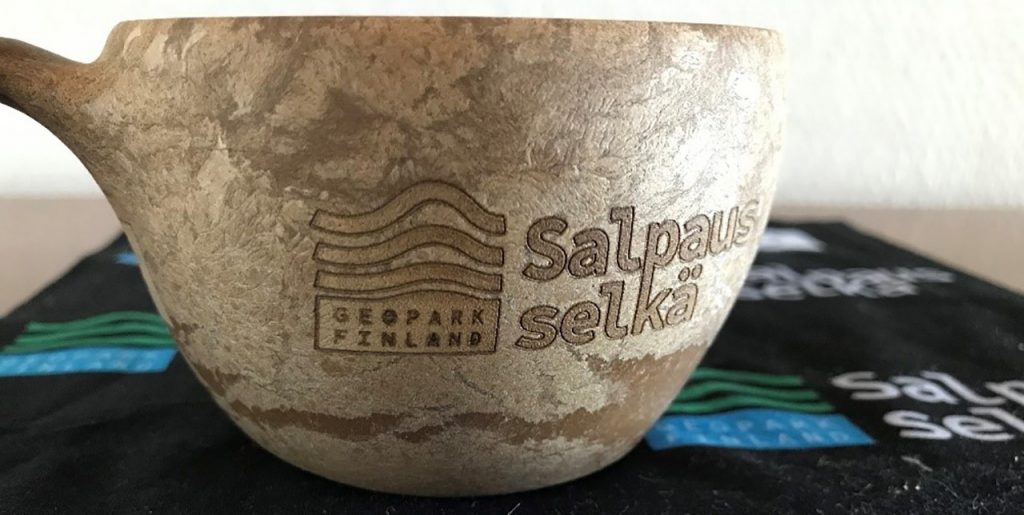
Another requirement of a geopark is education – geoproducts can serve education by emphasising what is special about the area and what visitors might take away after having visited it, this theme has been explored internationally relating to existing geoparks. Farsani (et al. 2017) list the various properties of geoproducts, such as helping to increase the visibility of a region, while providing business opportunities.
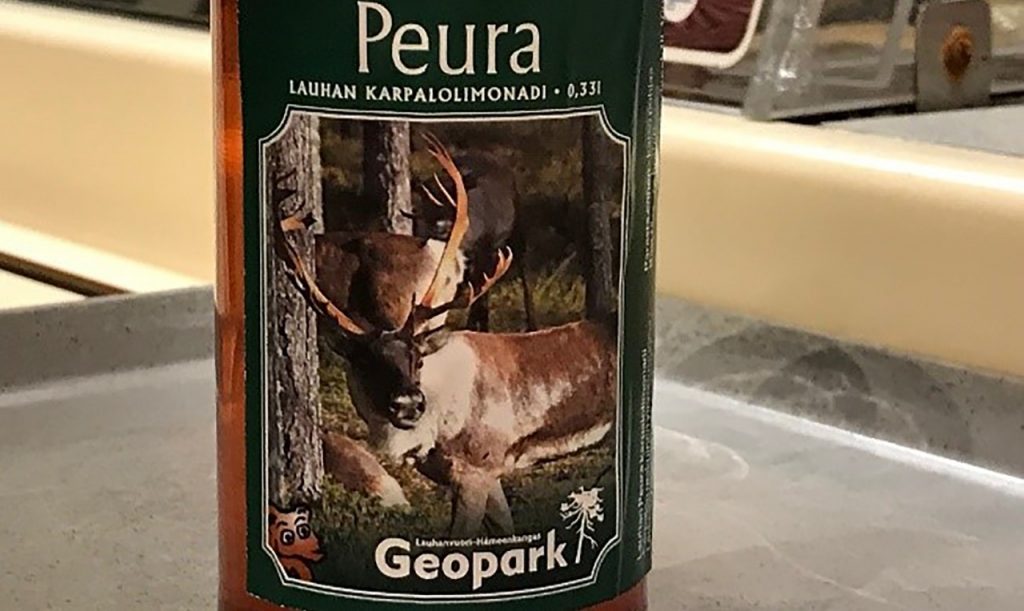
A particular type of product that can be offered by geoparks is of the culinary variety – geofoods that are either traditional to the region, or have been developed to showcase the special features of what grows there, as well as how it can be processed or served up. The GEOfood project and its network of members was set up to jointly promote the concept of offering sustainable foods strongly connected with their own geoparks.
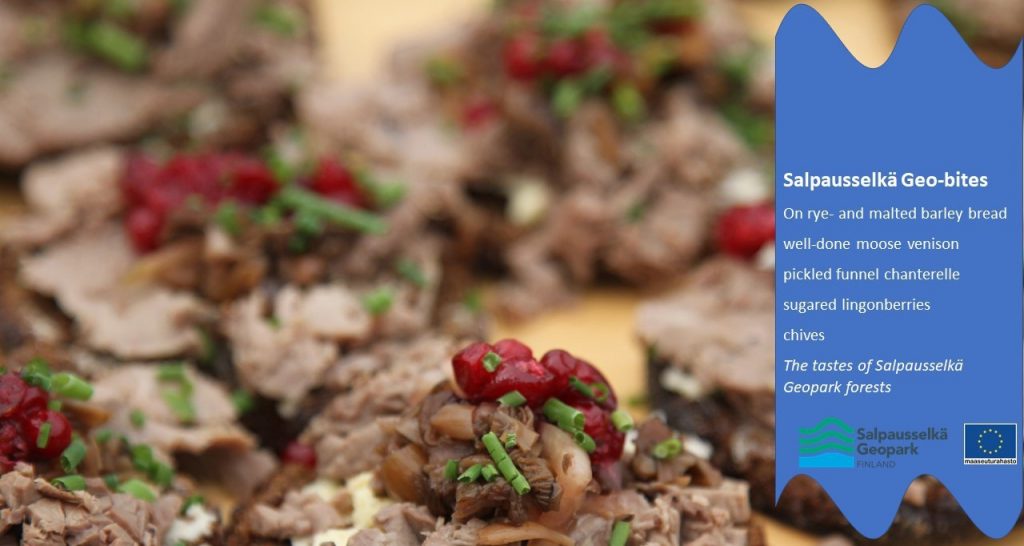
There has already been a certain amount of geofoods and drinks developed (see Images 2 & 3) in association with the Salpausselkä Geopark and more are being developed by local small enterprises to serve the larger numbers of visitors expected after achieving UNESCO Global Geopark status.
Author
Paul Carroll, M.Sc. is a lecturer in LAB University of Applied Sciences and works as an expert on the project Visibility for Salpausselkä Geopark.
References
Farsani, N.T., Mortazavi, M, Bahrami A., Kalantary, R. & Bizhaem F.K. 2017 Traditional Crafts: a Tool for geo-education in geotourism. Geoheritage Vol. 9, 577-584 . [Cited 19 March 2021]. Available at: https://www.researchgate.net/publication/313024797_Traditional_Crafts_a_Tool_for_Geo-education_in_Geotourism/citations
Rodrigues, J., de Carvalho, C.N. , Ramos, M., Ramos, R., Vinagre, A. & Vinagre, H. 2020. Geoproducts – Innovative development strategies in UNESCO Geoparks: Concept, implementation methodology, and case studies from Naturtejo Global Geopark, Portugal. International Journal of Geoheritage and Parks. Vol 9 (1),108-128 [Cited 19 March 2021]. Available at: https://www.sciencedirect.com/science/article/pii/S2577444120300629
Links
Link 1. UNESCO 2017. UNESCO Global Geoparks. [Cited 18 March 2021]. Available at: http://www.unesco.org/new/en/natural-sciences/environment/earth-sciences/unesco-global-geoparks/
Link 2. GEOfood. 2020. Welcome to geofood. [Cited 19 March 2021]. Available at: https://www.geofood.no/
Link 3. Lahti Region Ltd. 2021. Salpausselkä Geopark. [Cited 19 March 2021]. Available at: https://visitlahti.fi/en/frontpage/salpausselka-geopark/

